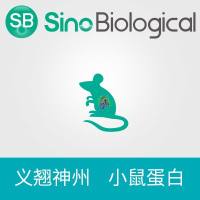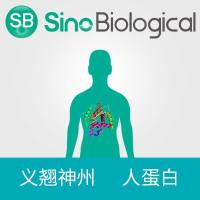Inhibition of Sonic Hedgehog Signaling with Cyclopamine in Order to Examine the Role of Cell Death in Tail Bud Malformations
互联网
Abstract:
Sonic Hedgehog is an essential glycoprotein integral for the proper craniofacial and tail bud development, in addition to the development of many other structures. Cyclopamine has been shown to block Shh, and cause deformations in various parts of the developing embryo, depending on the time of administration, perhaps through the apoptosis of certain cells. Cyclopamine was administered to 20 hour chick embryos to induce tail bud malformations. Dead cells were observed under a fluorescent microscope after staining with propidium iodide. Cyclopamine was observed to induce the apoptosis of clusters of cells in the tail bud region, in addition to massive cell death in the eye region. The massive regions of dead cells shows that the deformations are a result of dying cells, or the lack of proliferation of precursor cells resulting in less growth. Therefore, although Shh is necessary for proper limb patterning, it serves as more of a survival factor in this context. The inhibition of Shh at 20 hours causes cells in the tail bud to stop dividing and die, having implications on the various roles of Shh in early development.
Background and Significance:
Sonic Hedgehog (Shh) is an important glycoprotein essential for the development of diverse tissues during various stages of development (J.M. Britto et. al., 2000). It is integral in controlling the development and patterning of the dorsal ventral axis of the nervous system, neural tube, somites and also the anterior-posterior patterning of the limbs (J.J. Sanz- Ezquerro and C. Tickle, 2000). Shh has been shown to have a role in proper craniofacial and tail bud development.(J.P. Incardona, 1998)
Cyclopamine is a known Shh inhibitor which works by blocking the Shh receptor by interfering with exogenous cholesterol from the yolk, which interacts with the patched or smoothened proteins (J.P. Incardona, 1998). It induces holoprosencephaly in chick embryos when introduced prior to gastrulation, a syndrome characterized by facial and forebrain abnormalities (S.C. Ahlgren, 1999). A study by Ahgren et.al.(1999) demonstrated that inhibition of Shh increased cell death in the neural tube and neural crest, having many implications for later development. In addition, other models for tail bud development suggests that Shh may be required for the proliferation of tail bud cells. In other systems, Shh has been shown to enhance the proliferation of specific cells. To induce tail bud malformation, cyclopamine will be introduced at a later stage of development, at approximately 20 hours (J.P. Incardona, 1998). A staining technique using propidium iodide, which is specific to dead cells, will be utilized to examine whether apoptosis occurred normally in these treated embryos, or if extensive cell death is the cause of the malformations (R.W. Oppenheim, 1999). Propidium iodide (PI) intercalates into double-stranded nucleic acids. PI is excluded by viable cells but can penetrate cell membranes of dying or dead cells. The cyclopamine treated embryo will be compared with a control embryo to observe the specific causes of the malformations.
Specific Aim:
In this experiment, the role of Shh as a survival factor in avian (chick) embryos will be examined. We will inhibit Shh with cyclopamine during specific stages of development, and examine the corresponding patterns of cell death in the tail bud.
Rational:
This investigation will attempt to determine whether Shh acts as a survival factor or a proliferation factor. To accomplish this, we will be treating chick embryos with cyclopamine at 20 hours, thus blocking Shh signaling, which has been shown to result in tail bud malformations. A Propidium iodide stain specific for dead cells will determine whether the malformations occurred because of the lack of a survival factor, increasing cell death, or a lack of cell proliferation. The results of this experiment will tell us much about the various roles of Shh during the early stages of chick development. If increased cell death is seen, then Shh signaling plays a role as a cell survival factor, the inhibition of which causes increased apoptosis. If massive cell death is not seen, then the cells of the tail bud did not proliferate normally due to blocked Shh signaling, causing malformations in later stages. The findings about the role of Shh may have various implications for Shh signaling and gene expression in other vertebrates including mammals.
Procedure
-Embryos:
-Fertilized chicken eggs were incubated in the laboratory at 37o C with constant humidity until the desired stage (approximately 20 hours).
-Cyclopamine preparation and administration:
- 5 uL of Cyclopamine in 2-hydroxypropylcyclodextrin (HPCD) was administered to the embryo by injecting it through the vitelline membrane with a small pipette, through a small hole carefully cut in the shell.
- A solution of 45 % HPCD in PBS wasadministered in a similar fashion to all the control embryos.
- Embryos were allowed to continue developing in the incubator at 37 o C for an additional 48 hours.
- Staining Technique:
-Embryos were collected at 68 hours after initial incubation, or 48 hours after treatment. - Embryos were then washed with Howard's Ringer solution in a petri dish. Any extra- embryonic membranes were carefullyremoved with fine forceps.
- Embryos were covered with an appropriate volume of PI working solution (10 mg/ml PI in PBS) for approximately 10 minutes.
- Embryos were washed with Howard's Ringer and mounted on a depression slide. - Embryos were observed under a fluorescent microscope for the presence of dead cells in the tail bud and craniofacial regions.
- Physical Abnormalities:
-The embryos that were allowed to develop for a total of five days with cyclopamine were not stained and later observed under a dissecting microscope and photographed.
Result
Figure 1.
PI stain for control embryos (A&C)
PI stain for treated embryos (B&D)
Figure 2
Physical abnormalities in the tail bud of an unstained five day control (A) and five day cyclopamine treated chick embryo (B).
Discussion
The introduction of cyclopamine at the 20-hour stage induces massive cell death (due to Shh inhibition) in both the tail bud region and the craniofacial region. This can be seen through regions of brightly stained dead cells. Fig 1. Deformations in later stages in the tail bud (Fig.2 are caused by the apoptosis of developing cells. After five days of exposure to cyclopamine the tail bud region is smaller and damaged at the posterior end.
Conclusion
- Thus Shh was found to be a necessary survival factor in avian tail bud development among its many other functions.









